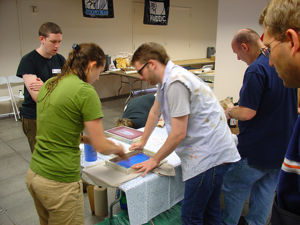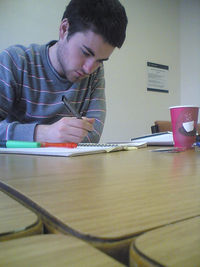Methods and tools
Contents
Assessment Methods and Tools
In this module, we are investigating different methods of assessing - written, exams and tests, self and peer-assessment (student role) and practical, and a range of tools (e.g., essays, multiple choice, portfolios, online tests, video, checklists etc.) that might be used. Previously, we explored some principles of aligning and designing assessment considering several factors.
- Language including instruction words.
- Effectiveness of different types of assessments.
- Requirements identified in the learning outcomes and their alignment with the assessments.
- Assessment aligned to the types of thinking you want the students to demonstrate (ICE model - Ideas, Connections and Extensions - and Blooms Revised Taxonomy).
- Consideration of cultural diversity.
Now it is time to think more in-depth about the methods and tools of assessment, and whether they are appropriate for what needs to be assessed. To do this, the methods and tools of assessment need to be examined more closely for effectiveness. In the last module you were given the opportunity to think about the effectiveness of different types of assessment. Now we are going to link this more closely to the principles or values of assessment. For example, if you are using multiple choice questions for summative assessment, it is advisable to give students plenty of practice in answering this type of question beforehand, and also in doing tests online. Therefore, formative assessment is necessary to help students develop their skills and knowledge and to become familiar with taking online tests. It is also good practice to give the students feedback on their responses. In online tests this can be built into the questions to guide the students, and allows the teacher the opportunity to suggest how they can extend their learning. Otherwise, the value of fair assessment is not adhered to, nor is this type of assessment going to enhance learning.
Fundamentals of Effective Assessment
Regardless of whether assessment is formal or informal, or formative or summative, a number of principles apply if effective assessments are to be designed. The fundamentals of effective assessment: Twelve principles has been published by the Centre for the Study of Higher Education at Melbourne University.
- Principle 1: Assessment should help students to learn. identifies that "formative assessment is crucial to effective learning", and that feedback encourages learning. Interestingly, you may find that formative assessment is often used with a dual purpose; to enable feedback and to encourage participation by students. Since students may value marked work more highly than unmarked work.
- Principle 2. Assessment must be consistent with the objectives of the course and what is taught and learned. This means that the assessment tools or methods that are chosen must align with the learning outcomes, and as mentioned previously, the language used to write the outcomes must match the instruction words in the assessments. For example, if higher order learning is intended, the learning outcomes would reflect this, using terms which match the higher intellectual skills as listed in Bloom's taxonomy.
The assessments are chosen to induce the required level of thinking. For example, open-ended questions could be used to encourage students to demonstrate they can analyse (analysis level) and create new knowledge (synthesis level) whereas multiple choice questions might be used for demonstrating recall (knowledge level).
Defining Assessment Methods and Tools
- An assessment method is defined as the philosophical or pedagogical approach to assessing. For example, written assessment or practical assessment, formative or summative assessment.
- Assessment tools are used for different assessment methods and are more specific. For example, posters, essays, exams, interviews etc, and can be used across a number of assessment methods. Also the tools used to mark assessments, e.g., rubrics can be considered as assessment tools.
Choosing the Methods and Tools
Eight broad categories of learning outcomes have been compiled by Lee Dunn (2011) from Oxford Brookes University (based on the work of Chris Morgan (1999) from Southern Cross University, New South Wales, and originates from the work of Nightingale et al. (1996)). Read: Selecting methods of assessment for a list of potential tools for each category. The authors of this resource refer to assessment methods such as portfolios, posters, reports group work under each of the eight categories. However, for the purposes of this course, these methods are regarded as tools for assessment.
- Thinking critically and making judgements - (e.g., developing arguments and reflecting) could be assessed using essays and journals.
- Solving problems and developing plans - (e.g., identifying problems, and analysing data) could be assessed using scenarios and group work.
- Performing procedures and demonstrating techniques - (e.g., computation, and using equipment) could be assessed using role play and posters.
- Managing and developing oneself - (e.g., working co-operatively and working independently) could be assessed using portfolios and learning contracts or agreements.
- Accessing and managing information - (e.g., researching and organising information) could be assessed using annotated bibliography and projects.
- Demonstrating knowledge and understanding - (e.g., recalling and describing) could be assessed using exams and essays.
- Designing, creating, performing - (e.g., visualising and producing) could be assessed using presentation and projects.
- Communicating - (e.g., communication individually or within a group; verbal, and written) could be assessed using written or oral presentation or observation.
Dunn , L. (2011). Selecting methods of assessment. Oxford, UK: Oxford Brookes University. Retrieved from http://www.brookes.ac.uk/services/ocsld/resources/methods.html
|
|



